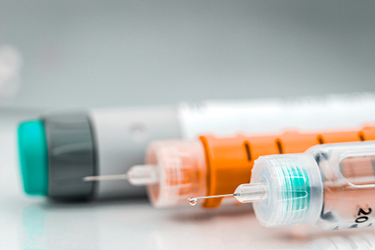4 (More) Critical Considerations For Drug Delivery Device Development
By Michael Song, Ph.D., AstraZeneca

Today, injection devices are a staple among biologic and other pharmaceutical products. With the exception of oncology products, the majority of biologic products today are launched as some form of combination product, which are stringently regulated by the FDA through 21 CFR Part 4. This article is Part 2 of a two-part article on important areas to consider before embarking on drug delivery device development, looking at important manufacturing, packaging, and other factors that developers of combination products must consider and why they need to be considered early in the device development program. (Click here for Part 1.)
Manufacturability And Control Strategy
Manufacturing complexity and control strategy is always a hot topic and an area that is often overlooked until later in the development process. This should not be so, as manufacturability and control strategy risks should be evaluated as part of the device selection process.
From a pharmaceutical perspective, manufacturability can be further broken down into two areas: device manufacturability and combination product manufacturability. Manufacturing complexity at the device vendor side is often overlooked or its assessment rigor overly simplified. A detailed manufacturing site visit and manufacturing line tour are essential, with appropriate subject matter experts, to evaluate the robustness of vendor manufacturing controls, procedures, and complexity/risks. Why is this important? The reason is once a device is selected, you will be relying on that vendor to supply you with good, reliable, and consistent device subunits/subassemblies for combination product manufacturing. If the device vendor does not have good manufacturing controls in place or the design is inherently difficult to manufacture and requires a lot of operator manual dexterity and skills, this poses a risk of defective parts being released. This, as you might imagine, has multiple implications. First, it may cause a delay in development timeline due to rejected batches. Second, it will increase the amount of work and costs on the pharma end, due to the need to conduct a more rigorous incoming inspection, usually involving sample testing, before accepting the batch. This typically means more in-process testing, inspection, and checks, which cost time, resource, and wasted materials. The program will most likely be over budget with milestones missed.
The second element associated with manufacturability is pharmaceutical manufacturing friendliness. Typically, an autoinjector comes in two subassemblies, whereby the prefilled syringe is inserted into a front shell subassembly and the power unit subassembly is subsequently attached, forming the complete autoinjector. While this may sound simple, minor elements within this may have a significant impact on manufacturing operations. For example, if both device subassemblies need orientation control in order for the two to mate properly during assembly, that adds complexity to the assembly equipment. Similarly, does the primary container need to be inserted in a particular orientation, or is the device designed to be agnostic to the orientation of the prefilled syringe flange in relation to the device body? In addition, does the prefilled syringe need to be inserted with minimal force and stroke to transition the autoinjector front shell subassembly from an unlock to locked state as part of the pharmaceutical manufacturing process? These minor details can have a significant impact when setting up your manufacturing process.
As a result, selecting devices is not just about the device technology. There needs to be consideration around manufacturability and whether there is a good balance between device subassembly and combination product manufacturing controls between yourself and the device vendor.
Packaging And Shipping
While primary container and device assembly are one part of manufacturability assessment, packaging considerations should never be put off until later in the program. Typically, I recommend evaluating the device for packageability and shipping risks as part of the device evaluation and selection process. There are too many cases where packaging was developed later in the program, just before design verification, and during design verification the devices preactivated and came out of their packaging container during shipping simulation. In my experience, we were able to identify defective device designs with preactivation risks early in the selection process, avoiding significant program risks, even though the devices had passed all other areas of consideration.
It is also important to be aware that within combination products, a large number of complaints will be packaging related. We have seen that some devices, while robust in functionality and easy to manufacture, may still pose a packaging risk. For example, it is well known in the industry that the older generation of passive needle safety devices are more prone than normal to accidental partial or full activation during assembly and packaging due to their inherent design. This needs to be taken into consideration when selecting and developing a device. Early assessment will also help alert packaging engineers to develop designs that may help mitigate this risk from a packaging standpoint.
Furthermore, packaging and usability go hand in hand. While a device may be very user friendly, if it doesn’t have good packaging hold points, it creates an increased risk of damage to the device during transportation or when it is being removed from the packaging.
Packaging approaches such as thermal-formed trays or carton inserts for holding devices, carton types, tampering evidence/security seals, etc., also need to be considered and developed. The thickness, material, and design of thermal-formed trays can have an impact that extends beyond operation into cosmetic and other complaints. Whether the carton and associated insert are self-erecting or hot-glued and other aspects of its design can have immediate and future operational impact.
Biocompatibility
While most in the pharma industry are familiar with extractables and leachables (E&L), biocompatibility is relatively new, as it comes from the medical device realm. Biocompatibility, like E&L, is intended to help ensure patient/user safety. The difference is biocompatibility looks at whether the device is safe for users to handle. As such, biocompatibility looks more at the direct and indirect user interfacing elements of the device that can sometimes be misinterpreted, creating needless complications. This is also why the introduction to ISO 10993 states that the standard is intended for individuals who are qualified by training and experience and who can interpret the requirements, taking into consideration all pertinent factors. (I will dive deeper into ISO 10993 and its interpretation in a future article.)
Biocompatibility is an area the FDA looks at very seriously. It is reference in device-related guidance documents as well as in 2016 FDA-issued guidance on ISO10993. ISO 10993 require planning as its tests typically requires a minimum of four months to complete. With biocompatibility, decisions such as the selection of test components that are considered patient-contacting, as well as which tests to perform, are important. Furthermore, component vendors may already have certain biocompatibility data or related data types that can be leveraged. The key to leveraging vendor data is careful analysis to ensure the data package is complete and applicable.
Clinical And Commercial Needs
Pharmaceutical companies have taken notice of digital health’s potential to engage patients, drive sales, and resolve today’s treatment challenges. Combination products are increasingly paired with digital solutions. Clinical trials face significant competition for trial protocol selection at trial sites, and clinical trial managers often look to digital solutions to help both ensure medication adherence and compliance to trial protocols and regiment. This is especially so with at-home clinical trials, where digital connectivity is an area of growing interest and one that needs to be taken into consideration as part of combination product development. We have already seen a significant number of clinical trials incorporating connected devices in the inhalation space.
Similarly, on the commercial side, with significant drug competition today, most drugs are launched with some sort of patient support services. As such, commercial brand leaders are also looking at digital health as a means to better support patient needs and improve medication adherence and compliance, with the end goal to increase patient days on treatment, which translates into increased sales and real-world evidence to better position the brand.
Developing a combination product also requires looking ahead to commercial needs. For some, first engagement with digital tools and solutions is to support clinical trials, but one cannot just focus on the clinical trial, because whatever is developed for the clinical trial will eventually transition into commercial.
The addition of digital connectivity adds another layer of complexity. Incorporating digital connectivity requires additional skills and planning in areas such as electronics, app development, back-end secure databases and data processing, digital user-centric design, regulatory, electronics, reverse logistics (if applicable), etc.
Conclusion
The factors addressed in this and the preceding article are just some of the high-level areas that that require consideration before development of a combination product. There are a number of other areas, such as critical quality attributes (CQAs), essential performance requirements (ERPs), contract manufacturing organization (CMO)/outside test lab (OTL) selection and management, platform concerns and leveragability, post-market surveillance and compliance investigation requirements, unique testing requirements, and device container closure integrity testing. We will dive deeper into these topics in subsequent articles in this series.
Disclaimer: Opinions expressed in this article are those of the author and do not necessarily represent those of the author’s employer.
About The Author:
 Michael Song, Ph.D. leads the biological device functionality, safety, and digital connectivity group within AstraZeneca’s biologic device development. In his current role, he oversees device functionality and safety, primary container science and technology, biocompatibility, container closure integrity strategy and testing, and digital connectivity development. Prior to his current role, Song was head of the Device, Packaging, and Process Engineering Department at Adello Biologics (part of Amneal Pharmaceuticals). He has held key technical positions at Stryker, Amgen, and Kavlico Corporation and has led the development of both combination products as well as 510(k) medical devices. He received his postdoctoral training at Barrow Neurological Institute / St. Joseph Hospital and Medical Center (part of Dignity Health) and holds a B.S. in electrical engineering from Purdue University and Ph.D. in neuroscience and Toxicology from Iowa State University.
Michael Song, Ph.D. leads the biological device functionality, safety, and digital connectivity group within AstraZeneca’s biologic device development. In his current role, he oversees device functionality and safety, primary container science and technology, biocompatibility, container closure integrity strategy and testing, and digital connectivity development. Prior to his current role, Song was head of the Device, Packaging, and Process Engineering Department at Adello Biologics (part of Amneal Pharmaceuticals). He has held key technical positions at Stryker, Amgen, and Kavlico Corporation and has led the development of both combination products as well as 510(k) medical devices. He received his postdoctoral training at Barrow Neurological Institute / St. Joseph Hospital and Medical Center (part of Dignity Health) and holds a B.S. in electrical engineering from Purdue University and Ph.D. in neuroscience and Toxicology from Iowa State University.
